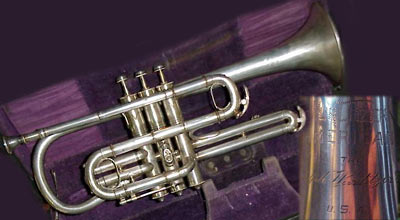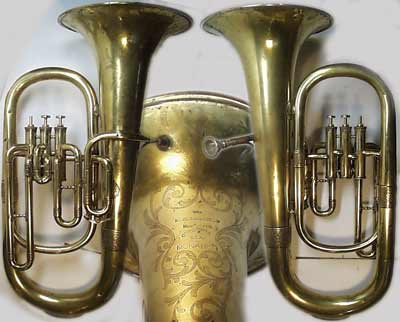Wurlitzer Lyric Cornet Serial Numbers


Related Content • It’s a Wurlitzer theater organ. In the early 20th century, thousands of these gigantic pipe organs were installed in movie theaters throughout the United States, Canada, England and Australia to accompany silent movies. This one worked its wonders in the Fox Theatre in Appleton, Wisconsin. The Smithsonian’s instrument is a rare, completely original Wurlitzer donated by the estate of Lowell Ayars, a New Jersey music teacher, in 1993. Ayars kept it in museum-quality condition during the 30-some years it was played in his home.
When Ayars died in 1992, he willed it to his friend Brantley Duddy, and Duddy contacted the Smithsonian, which gratefully accepted it for the musical instrument collection of the National Museum of American History. For now, it sits in storage, its burnished white-and-gold console protected by a sheet of plastic. But there are plans to restore it to glory. The Ayars organ, a Model 190 (serial number 2070), was built by the Rudolph Wurlitzer Company of North Tonawanda, New York, in 1929 for the Fox Theatre. After the theater became a department store in 1959, the organ briefly went into storage until Ayars bought it and installed it in his New Jersey home. As theater organs go, this one is modest in size, its pipes fitting into a space about 15 feet wide and 13 feet deep. It sports two keyboards (called manuals), 584 individual pipes organized into eight ranks, and four tuned percussion instruments as well as special effects.
The largest original Wurlitzer still in operation—with more than 4,000 pipes in 58 ranks, ranging from 32 feet in length to the size of a pencil—is also the most famous: the Radio City Music Hall Wurlitzer in New York City, which was installed in 1932. Between 1911 and 1943, the Rudolph Wurlitzer Company built more than 2,000 theater organs, most of them about the size of the Ayars, for smaller, neighborhood theaters.
Deutsche Wurlitzer GmbH. First Juke-Box, produktion started 1960. Lyric 'T' Lyric 'P'. Vintage Band Instruments is your number one dealer offering vintage trumpets for sale! Whether you're a collector, musician or simply a lover of music; a vintage trumpet will satisfy that itch. We offer a wide variety of vintage trumpets for sale from some of the most well-known manufacturers like Martin, Olds, Bach, and more. 58294 is the serial number to my 1914 wurlitzer american saxophone what is it made of and how much is it worth. You can email me on.
The first silent films had been accompanied by a pit orchestra or, for the more frugally minded impresario, a lone piano. When the theater organ came along, with its ability to imitate an orchestra and create special sound effects, every movie house owner had to have one. At its peak in 1926, the company was shipping a Wurlitzer a day, mass-producing one of the most technologically advanced machines of its time.
The theater organ is related to the classic church pipe organ, whose basic design has been around for more than 2,000 years. Air blown through pipes, each tuned to create a different musical tone, creates the sound. Blowers located under the ranks, or sets of pipes, force air into them when valves are opened as the organist plays the keys and stops (tabs the organist flips up or down to activate different ranks of pipes). In a church organ, this rather simple mechanism can produce only a certain number of sounds. To the dismay of lovers of the traditional organ, British inventor and telephone engineer Robert Hope-Jones electrified it and created a switching system to allow any combination of pipes and effects to be played at once.
His instruments could produce numerous inventive sound effects, including train and boat whistles, car horns and bird whistles, and some could even simulate pistol shots, ringing phones, the sound of surf, horses’ hooves, smashing pottery, thunder and rain. The new organs either incorporated or at least imitated other musical instruments—from piano and violin to trumpet, drums, cymbals, even bells and chimes. Hope-Jones dubbed it the Unit Orchestra: with it an organist could imitate an entire dance band or orchestra. In 1910, after his company foundered, Hope-Jones was bought out by the Wurlitzer Company, which, with elegant-looking products and aggressive advertising, dominated the theater organ market.
Even today, many people remember the slogan: 'Gee Dad, it’s a Wurlitzer.' Wurlitzer’s time in the limelight was brief. The sound of Al Jolson’s voice in The Jazz Singer of 1927 spelled doom for the theater organ. Flir Ultra 8500 Manual. Soon Hollywood was putting sound in every movie it produced. By the mid-1930s, most theater owners had replaced their organs with speaker systems.